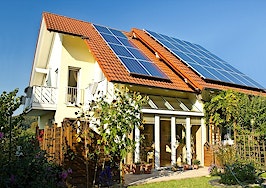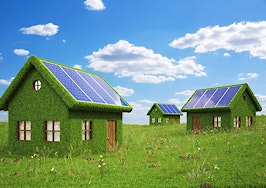The federal government wants to encourage homeowners to make their homes as energy efficient as possible. To do so, back in 2005 Congress enacted a tax credit for “nonbusiness energy property.”
This was a tax credit (subject to a $500 lifetime cap) for certain energy efficiency improvements to a taxpayer’s existing principal residence. The credit expired at the end of 2011, but was brought back from the dead by the fiscal cliff tax deal back in February. It was made retroactive to apply to 2012 and then expire at the end of 2013.
So, if you haven’t used up your lifetime $500 limit already, 2013 could be your last chance to do so.
You may claim a credit of 10 percent of the cost of certain energy-saving property that you added to your main home. This includes the cost of qualified insulation, windows, doors and roofs. You can claim no more than $200 in total credits for doors.
You can also obtain the credit if you install specified types of “qualified residential property.” You can get a credit equal to the full cost of the equipment up to the following caps:
- advanced main air circulating fan: $50
- natural gas, propane, or oil furnace or hot water boiler with an annual fuel utilization rate of 95 or greater: $150
- electric heat pump water heater with an energy factor of at least 2.0: $300
- electric heat pump that achieves the highest efficiency tier established by the Consortium for Energy Efficiency: $300
- central air conditioner that achieves the highest efficiency tier established by the Consortium for Energy Efficiency: $300
- natural gas, propane or oil water heater that has either an energy factor of at least 0.82 or a thermal efficiency of at least 90 percent: $300
- biomass stoves that use “plant-derived fuel available on a renewable or recurring basis, including agricultural crops and trees, wood and wood waste and residues (including wood pellets), plants (including aquatic plants), grasses, residues and fibers”: $300
Such property must meet certain energy efficiency requirements for you to qualify for the credit. For purposes of taking the credit, you can rely on a manufacturer’s certification in writing that a product is qualified residential energy property. Do not attach the certification to your return. Keep it for your records.
To obtain the credit, you must file IRS Form 5695, Residential Energy Credits, with your tax return. Because the credit was made retroactive to Jan. 1, 2012, it can be used for qualified equipment you installed any time during the past year as well as through Dec. 31, 2013. If you qualified for the credit in 2012, you can amend your tax return for that year to claim it.
After 2013, the only energy efficiency credits sure to be available are those for installing residential alternative energy equipment such as solar panels and geothermal heat pumps. The credit for these is scheduled to last to the end of 2016. See the article “5 green energy projects with buyer appeal.”
Stephen Fishman is a tax expert, attorney and author who has published 18 books, including “Working for Yourself: Law & Taxes for Contractors, Freelancers and Consultants,” “Deduct It,” “Working as an Independent Contractor” and “Working with Independent Contractors.








